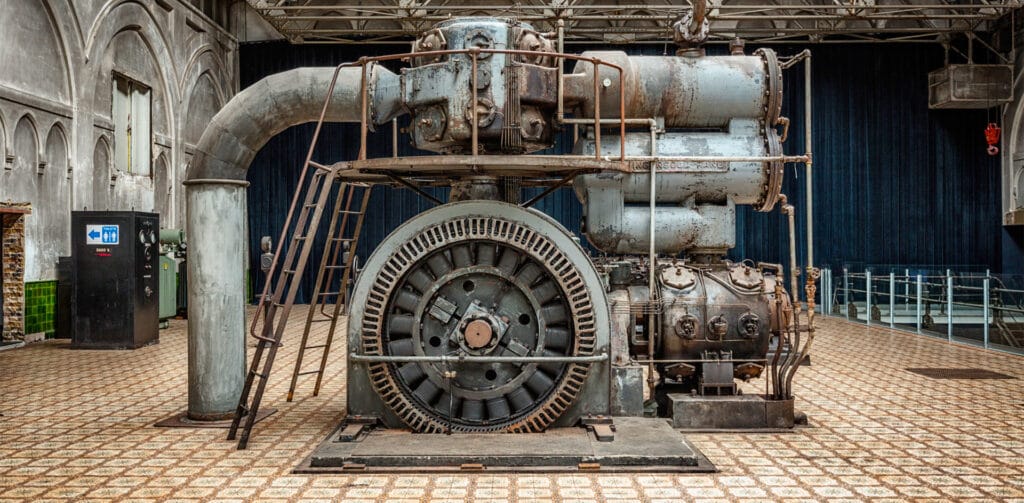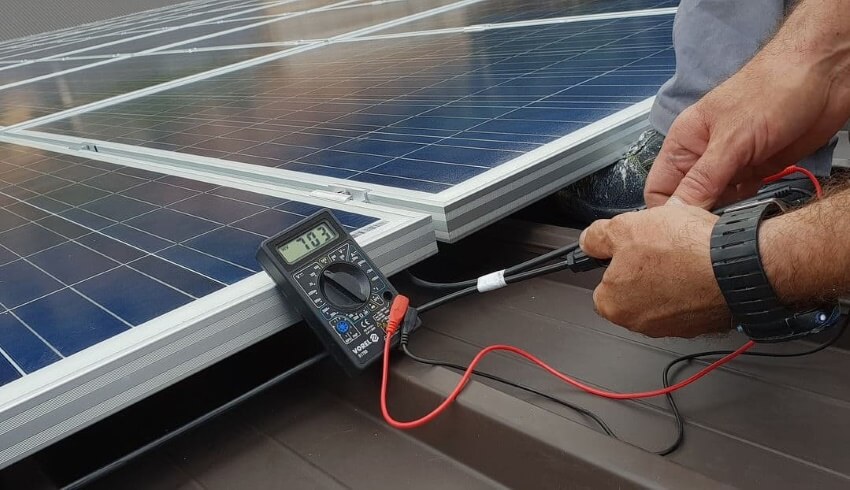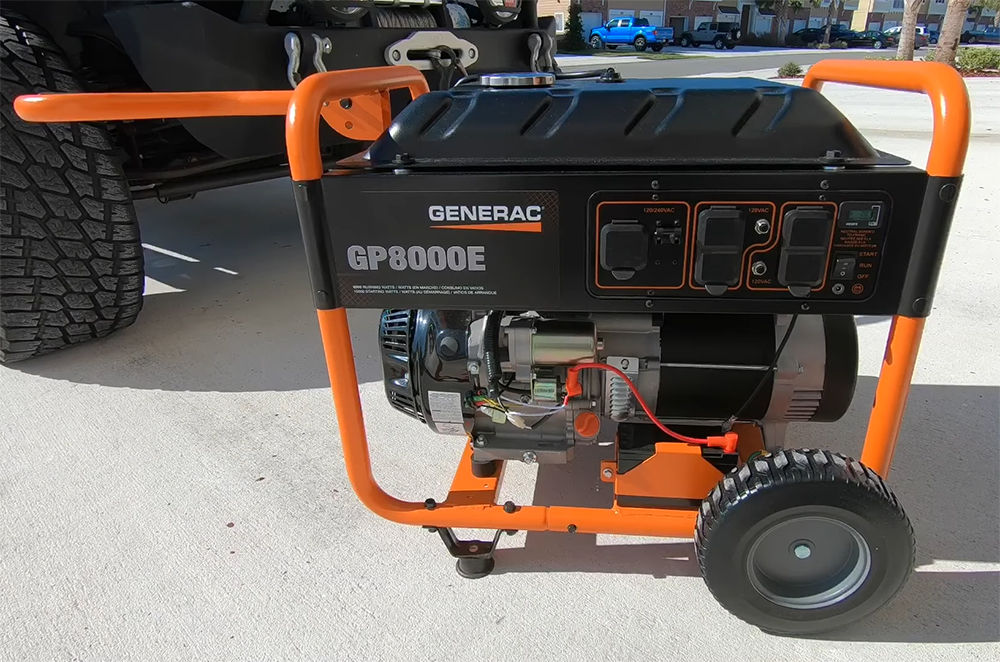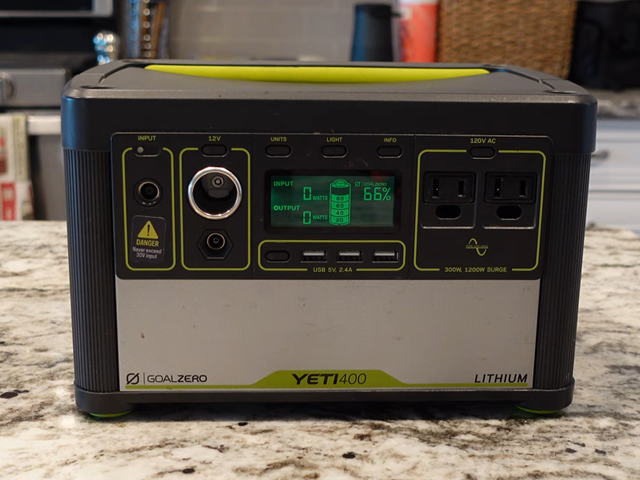
Generac is one of the best-known manufacturers in the generator industry, and for a good reason. While Generac may not have the name recognition of Honda or Yamaha when it comes to engines, the company has been able to compete on performance at a much lower price over its 60-year history. When you get the best Generac generator, you can be assured that you’re getting a model that will last and offer all of the features you need.
In order to help you find the best Generac generator, we looked through the company’s entire lineup and considered a number of important factors. First, we looked at different types of generators – conventional and inverter generators, as well as portable and standby generators. All of these generator types are designed for very different purposes. Within each category, we looked at the rated and maximum power output of each model, the types of fuel it is able to run on, and how long each generator can run for.
We spent tens of hours reading technical specifications from Generac as well as customer reviews about each of their generators to come up with our five favorite Generac models, highlighted in the table below. After that, you’ll find detailed reviews of each generator, complete with pros and cons. Our buying guide covers everything you need to know about choosing the right Generac generator for your needs. Finally, we sum up our three overall favorite generators in Generac’s current lineup.
This compact and powerful inverter generator offers incredible technical specifications and is a favorite among users looking for a high-end portable generator.
The iQ3500 offers 3,500 watts of surge power and 3,000 watts of continuous power, which is enough to power most RVs or the essential appliances in your home during an outage. An included LCD screen on the generator panel displays the amount of power you are drawing and the remaining runtime so you can keep track of the generator’s performance.
The runtime on this generator is also very good thanks to the 2.6-gallon fuel tank. At 50% load, the generator is capable of running for nearly nine hours – not quite enough to run it for a full day of heavy use, but far longer than the competing generator from Honda.
The generator’s outlets include two 120-volt outlets and a 30-amp twist-lock outlet that can be paired with an RV adapter or a power strip for extra outlets. There’s also a USB charging port to take advantage of the clean power for charging small electronics. The generator has both an electric starter and a backup recoil starter, so you’ll never be unable to get it running.
But the best feature of this generator by far is how quiet it is. This generator produces just 44 dB of noise at 25% load, making it 5 dB quieter than the already impressive Honda competitor.
Generac also matches Honda’s long three-year residential and commercial warranty.
The only ding against this generator is that, at 110 pounds, it’s heavy and doesn’t have a set of wheels.
This standby generator is one of Generac’s most powerful residential home offerings. The whopping 22-kilowatt power output on liquid propane is designed to handle the power needs of large homes with a lot of appliances or multiple air conditioning. It can also be connected to your home’s natural gas line to give you a virtually endless fuel supply. When running on natural gas, the generator is rated for 19.5 kilowatts.
It may seem surprising given its size, but this generator is also one of the quietest standby generators available on the market today and is quieter than many portable generator options. At a 25% load, it produces just 57 dB of noise. Even at maximum power, this generator isn’t so loud as to draw complaints from the neighbors.
The generator comes with a 200-amp smart transfer switch, which allows the generator to start itself automatically when it senses the power go out. In addition, a mobile-friendly application built into the generator allows you to monitor its activity from your smartphone and get notifications when the power goes out.
The main drawback to this generator is that it only supplies 240-volt electricity, so you’ll need a step-down transformer into your circuitry in order to use the power for the majority of your home appliances and lights. For most homeowners, that means you’ll need to call an electrician for help with installing this generator.
Generac covers this generator with a five-year warranty, so you can rest assured that it will work for years to come.
This massive portable generator is designed to power your entire home during an outage or to serve as the power source for a busy worksite.
The generator is capable of producing 10,000 watts of surge power and 8,000 watts of continuous power thanks to the huge 420cc Generac OHV engine. The fuel tank is large at 7.5 gallons, but unsurprisingly the fuel economy on this generator is somewhat poor. From a full tank, the generator runs for only 9.5 hours at a 50% load – meaning you’ll have to refuel once during the day if you are running over 4,000 watts.
The generator offers four 120-volt outlets as well as a 120-volt/240-volt twist-lock outlet for powering heavy-duty appliances and tools. However, some commercial users wished for a second 240-volt outlet. There’s also a small LCD screen so that you can monitor power draw and remaining runtime.
The generator is by no means compact, but Generac did their best not to make it too hulking. The frame is mounted on pneumatic wheels for easier transport and the frame includes stow-away handles to help tow it around. Loading the generator into and out of a vehicle is still difficult, though, since it weighs almost 200 pounds.
Another downside to this generator is that Generac only provides a short two-year warranty for residential users and a one-year warranty for commercial users. That said, users found that the generator was highly reliable even after years of use.
This inexpensive inverter generator is one of the more consumer-friendly offerings from Generac. It’s ideal for applications where portability is at a premium and power demands are modest.
The generator produces a maximum of 2,200 watts and is rated for just 1,700 watts, so don’t expect to power more than a few basic appliances with it. Even then, you’ll be running the generator close to its rated power most of the time, so plan on a high fuel consumption rate.
That is particularly a problem because the runtime of this generator is already limited by the 1.2-gallon fuel tank. The generator runs for just 10.75 hours at a 25% load and so may be limited to just a few hours of runtime in many applications.
That said, the panel of this generator is nicely equipped with a pair of 120V outlets, a single USB charging port, and a 12V DC outlet for charging batteries. It can also be run in parallel with other Generac inverter generators if you need more power than a single portable inverter generator can supply. All outlets are grounded and can be quickly and easily reset in case of a surge.
One big advantage of this generator is that it weighs just 47 pounds and has a prominent carry handle for transport. The noise produced by this generator is not advertised by Generac, but users found that it is not too noisy and is comparable to other inverter generators in this size class.
Another minor concern with this generator is that the warranty is somewhat short at just two years for residential users and one year for commercial users.
This portable inverter generator is a more compact, quieter, and stripped-down offering than Generac’s GP2200i. Like the GP2200i, this generator produces 2,000 watts of surge power and 1,600 watts of continuous power. Thanks to a tiny 1.06-gallon fuel tank, it won’t run for very long – it is rated for just 7.7 hours at 25% load.
The generator is also light on outlets, with just two 120-volt outlets and no 12-volt DC port or USB charger. Two light-up gauges on the generator’s panel indicate your remaining fuel and wattage, which is a nice touch compared to the standard voltmeter. The generator only offers a recoil starter, which users found was relatively reliable and easy to use.
The main advantage of this generator is that it’s quiet – it produces just over 50 dB at a 50% load. That makes it an ideal choice for anywhere you need just a small amount of power and don’t want your generator to be noticed.
Still, given that this generator costs more than the more feature-filled GP2200i, it would be nice to see some additional features on this generator such as USB ports or an electric starter. It also weighs 46 pounds, nearly the same as the GP2200i. Plus, one major issue for some users is that the warranty is extremely short as well, at just 90 days.
Now that you know more about our five favorite generators in Generac’s lineup, how do you choose between them to find the generator that’s right for you? We covered generators that have widely different uses, so we’ll dive into how to choose between portable and standby, or between inverter and conventional generators. We’ll also look at what sets Generac apart from the rest of the market.
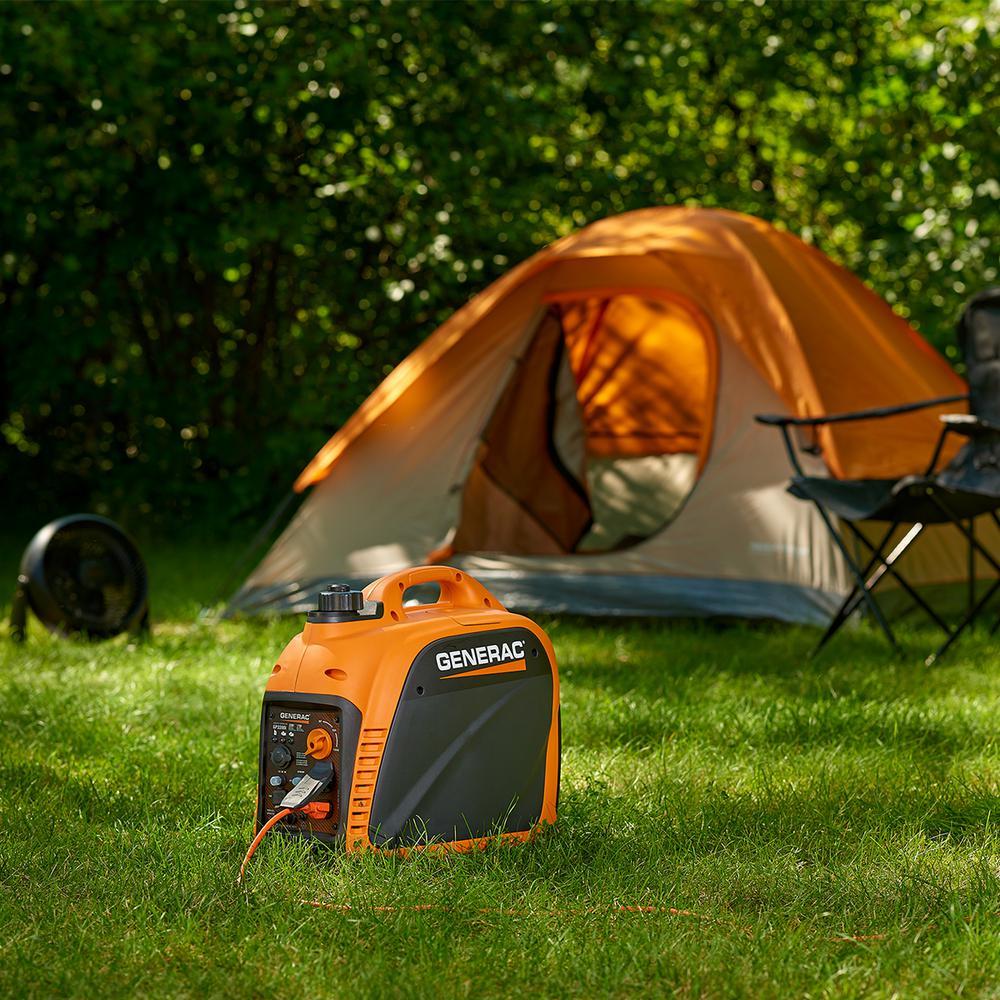
In addition, while Generac is by no means a budget brand, their generators are priced so that consumers can actually afford them. This is in contrast to generators from companies like Honda and Yamaha, which cost nearly twice what the competition does in many cases without providing tangible benefits.
The company also maintains a nationwide set of dealers and a responsive technical support staff, so you can be sure that you’ll have the help you need after buying a Generac generator. Of course, the company’s generators are known for their durability, so you may never need to access this support.
The only downside to Generac is that because their generators try to cater to a relatively wide audience of users, their generators aren’t as suited for specialized uses as the offerings from other generator manufacturers. However, this isn’t a problem if you plan to use your generator for a relatively wide variety of needs.
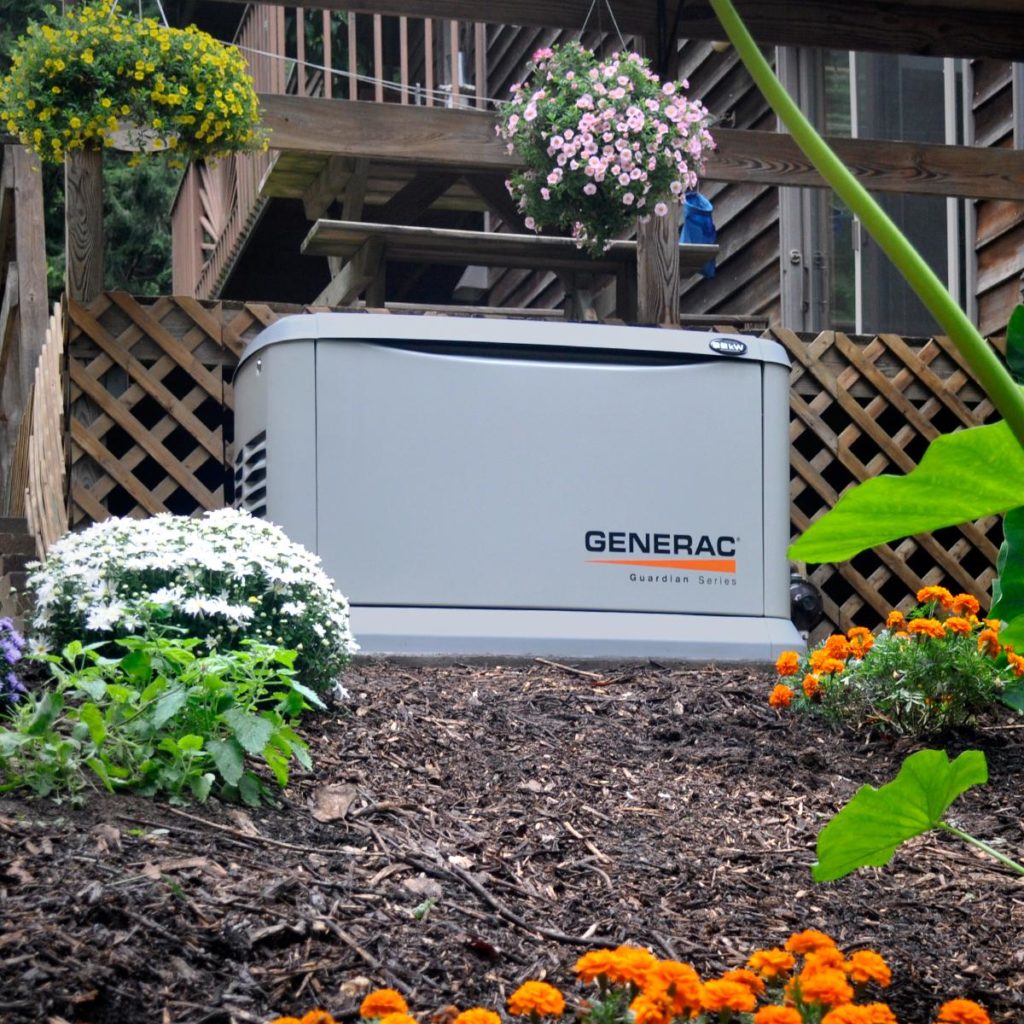
If the sole reason that you’re buying a generator is to power your home during a power outage, it’s hard to beat a standby generator. These generators are designed to connect directly to your home’s circuit board, so you can use all of your appliances normally even when the power grid is down. Even better, standby generators automatically turn on when they sense that power to your home has been cut off, so that you never have more than a few seconds of outage before the generator turns on. Another major advantage of standby generators is that they are extremely quiet compared to portable generators with the same power capacity.
Portable generators are designed to move, so that you can power either appliances in your home or tools or appliances away from your home.
If you do want to use a portable generator with your home, you’ll need to plug appliances directly into the generator itself, since you cannot connect a portable generator to your home’s circuit board. In addition, unless you were expecting an outage, you’ll likely have to pull the portable generator out of the garage, fuel it, and then start it before you can get the power back on.
That’s not to say that portable generators can’t get the job of powering your house done. They are typically much cheaper than standby generators, even if they offer nearly as much power. That alone can be a reason to opt for a portable generator, especially if power outages are short and infrequent in your area. However, these larger portable generators are hardly easy to move and can produce a deafening amount of noise.
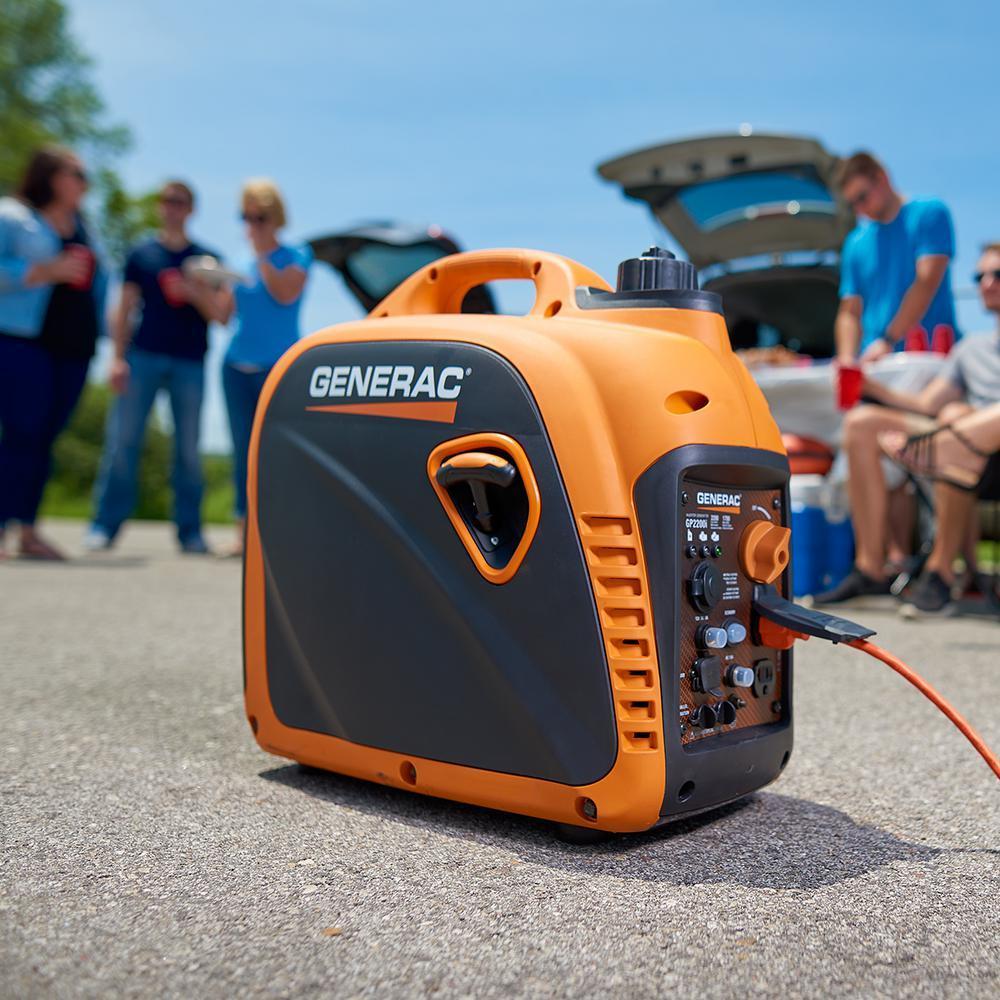
Converting AC power to DC and back cleans the electrical current, smoothing out the energy so that there is far less distortion. This means that the electricity coming from an inverter generator is less likely to cause miniature power surges that could damage your sensitive electronics, such as computers and smartphones. In contrast, you should be hesitant to plug any electronics with microprocessors into a conventional generator, as the electricity could fry your device.
In addition, inverter generators offer a number of other benefits over conventional generators.
Inverter generators are typically compact and lightweight compared to conventional generators that produce the same amount of power. That makes them much better candidates for portability and storage.
Inverter generators are also very quiet compared to conventional generators. They can produce less than 50 dB at 25% load, compared to well over 60 dB for conventional generators.
However, there are some downsides to inverter generators. Inverter generators are almost always more expensive than conventional generators because of the newer technology and extra electronic components they offer. Importantly, inverter generators can be much costlier to repair than conventional generators because of the complexity of the microprocessors coupled with the engine.
In addition, inverter generators are typically limited in the amount of power they can offer. The most powerful inverter generators max out around 4,000 watts of power. However, two or more inverter generators can be hooked up in parallel to provide additional wattage.

When it comes to matching that estimated power to a generator’s power capabilities, there are two power ratings to know about. The surge power is the amount of power the generator can sustain for several seconds in order to allow motor-driven appliances, like refrigerators, freezers, and even some power tools, to start up. The running power is the amount of power that you’ll be able to draw from the generator over its entire runtime.
When choosing a generator based on your power needs, it’s always a good idea to leave some breathing room in your running and surge wattages. If you find yourself with too much power, especially on an inverter generator, you can use that wattage to charge small electronics.
Whether you’re planning to power your home through an extended outage or simply run some tools in the yard for a few hours, the runtime of your generator is an important consideration. Also keep in mind that adding more fuel to your generator can be a time-consuming process, as you need to wait for the generator to fully cool down before you can top off the tank.
The runtime of a generator is determined by a combination of the fuel efficiency of the engine and the capacity of the fuel tank. For example, a generator with a small one-gallon fuel tank like the Generac iQ2000, can only run for a brief 7.7 hours at 25% load.
Keep in mind that standby generators like the Generac 7043 typically do not list a runtime, but rather a fuel consumption rate. This is because standby generators will typically be running on a natural gas line or a large propane tank, rather than a limited fuel tank.
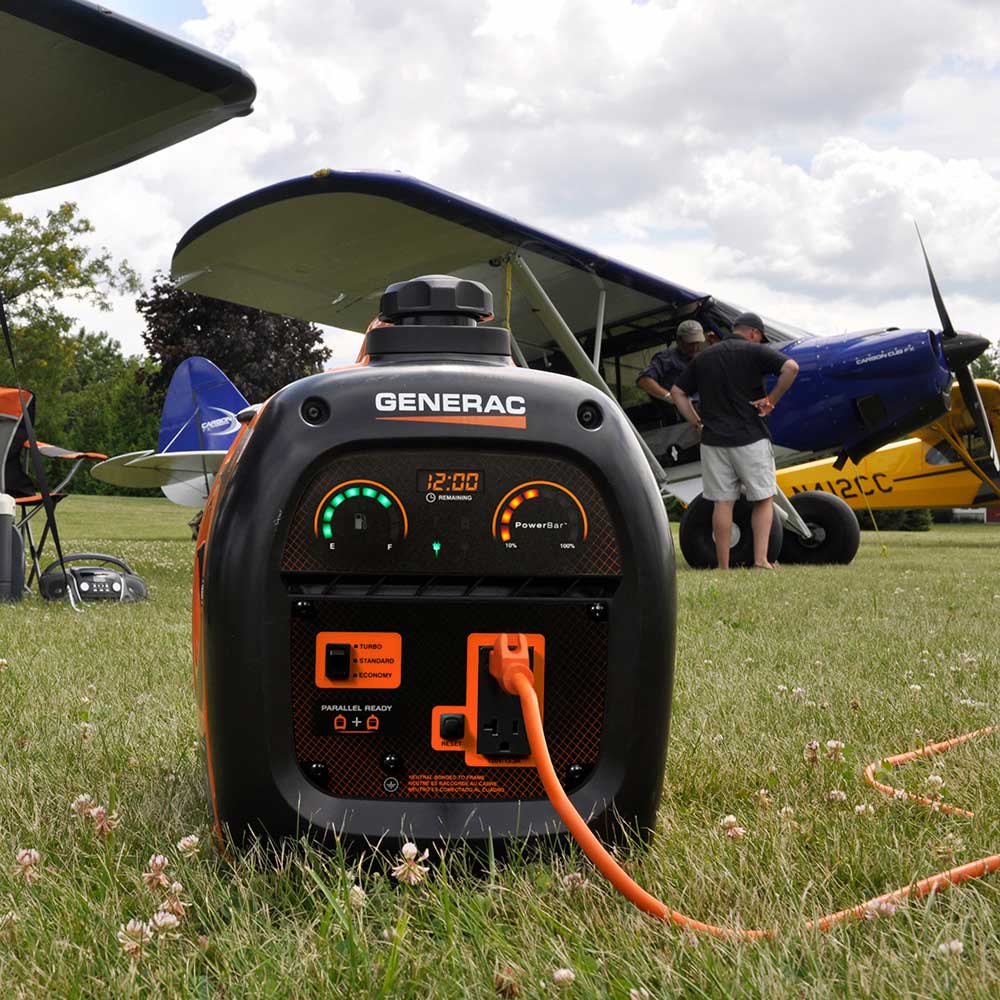
Another important safety feature that all of the generators we reviewed have is an automatic low-oil shutoff. This shutoff detects whenever the engine oil is dangerously low and powers down the generator before the lack of oil can damage the engine.
One major, often underrated safety feature that all of the Generac generators we reviewed have, except for the GP8000E, is an enclosed engine. Simply encasing the engine ensures that you can’t burn yourself on any hot exposed engine components.
Installation and maintenance are very different between portable and standby generators. For portable generators, the most important thing that you can do to maintain your generator is to replace the oil every 50–100 hours, and possibly even more frequently if you use the generator in dusty conditions or at its maximum power output.
In addition, keep in mind that you need to allow the generator to cool down fully before refueling when using a portable generator.
For standby generators, it is typically a good idea to have a professional electrician do any wiring if you will have it connected directly to your home. In addition, you should conduct an inspection of your generator at least once a month, and do a more thorough inspection every six months. Your monthly inspection can ensure that the unit is clean and that it has enough oil, while the semi-annual inspection can dive deeper to check that the alternator and transfer switches are functioning properly.
Cost is a major factor in any generator purchasing decision. Generac’s generators are in the middle of the price range compared to their competitors, but the cost of specific generators varies a lot depending on their specifications and how much power they offer. For example, the small and portable GP2200i costs under $550, while the larger iQ3500 inverter generator costs over $1,300. Standby generators can be quite expensive compared to portable generators – the 7043 costs around $5,000.
Our three overall favorite generators in Generac’s lineup are the iQ3500, the 7043, and the GP8000E. All three of these generators serve vastly different purposes. The GP8000E is a beast of a portable generator, offering 10,000 watts of surge power, designed to power your entire house or a worksite for short periods at a time. The 7043 is a standby generator intended to power your home through an extended power outage with up to 22 kilowatts of power on propane. And the iQ3500 is a versatile portable generator optimized to make as little noise as possible. We feel that the iQ3500 is the overall best Generac generator because it offers the most possible uses, given that it is an inverter generator with an impressive 3,000 watts of continuous power, and because it is incredibly quiet at just 44 dB at a 25% load.
